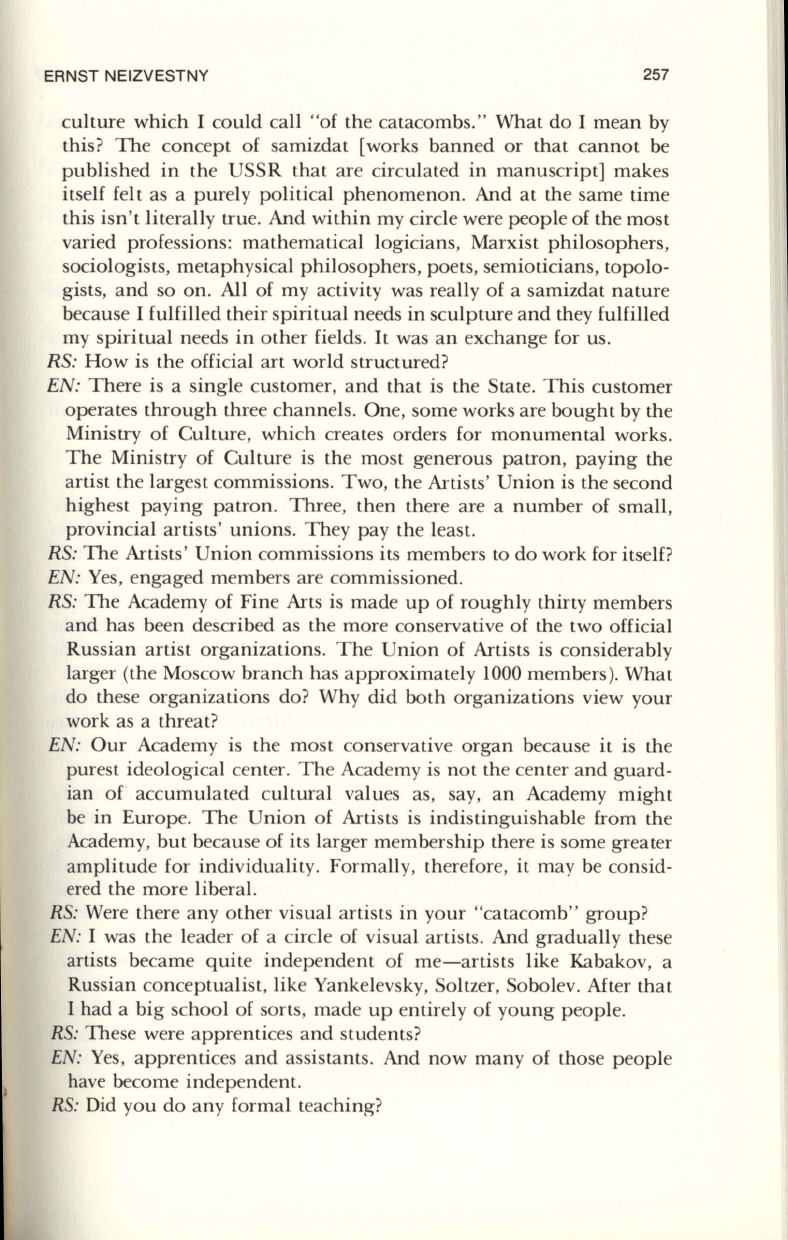
ERNST NEIZVESTNY
257
culture which I could call "of the catacombs." What do I mean by
this? The concept of samizdat [works banned or that cannot be
published in the USSR that are circulated in manuscript] makes
itself felt as a purely political phenomenon. And at the same time
this isn't literally true. And within my circle were people of the most
varied professions: mathematical logicians, Marxist philosophers,
sociologists, metaphysical philosophers, poets, semioticians, topolo–
gists, and so on. All of my activity was really of a samizdat nature
because I fulfilled their spiritual needs in sculpture and they fulfilled
my spiritual needs in other fields.
It
was an exchange for us.
RS:
How is the official art world structured?
EN:
There is a single customer, and that is the State. This customer
operates through three channels. One, some works are bought by the
Ministry of Culture, which creates orders for monumental works.
The Ministry of Culture is the most generous patron, paying the
artist the largest commissions. Two, the Artists' Union is the second
highest paying patron. Three, then there are a number of small,
provincial artists' unions. They pay the least.
RS:
The Artists' Union commissions its members to do work for itself?
EN:
Yes, engaged members are commissioned.
RS:
The Academy of Fine Arts is made up of roughly thirty members
and has been described as the more conservative of the two official
Russian artist organizations. The Union of Artists is considerably
larger (the Moscow branch has approximately 1000 members). What
do these organizations do? Why did both organizations view your
work as a threat?
EN:
Our Academy is the most conservative organ because it is the
purest ideological center. The Academy is not the center and guard–
ian of accumulated cultural values as, say, an Academy might
be in Europe. The Union of Artists is indistinguishable from the
Academy, but because of its larger membership there is some greater
amplitude for individuality. Formally, therefore, it may be consid–
ered the more liberal.
RS:
Were there any other visual artists in your "catacomb" group?
EN:
I was the leader of a circle of visual artists. And gradually these
artists became quite independent of me-artists like Kabakov, a
Russian conceptualist, like Yankelevsky, Soltzer, Sobolev. After that
I had a big school of sorts, made up entirely of young people.
RS:
These were apprentices and students?
EN:
Yes, apprentices and assistants. And now many of those people
have become independent.
RS:
Did you do any formal teaching?


